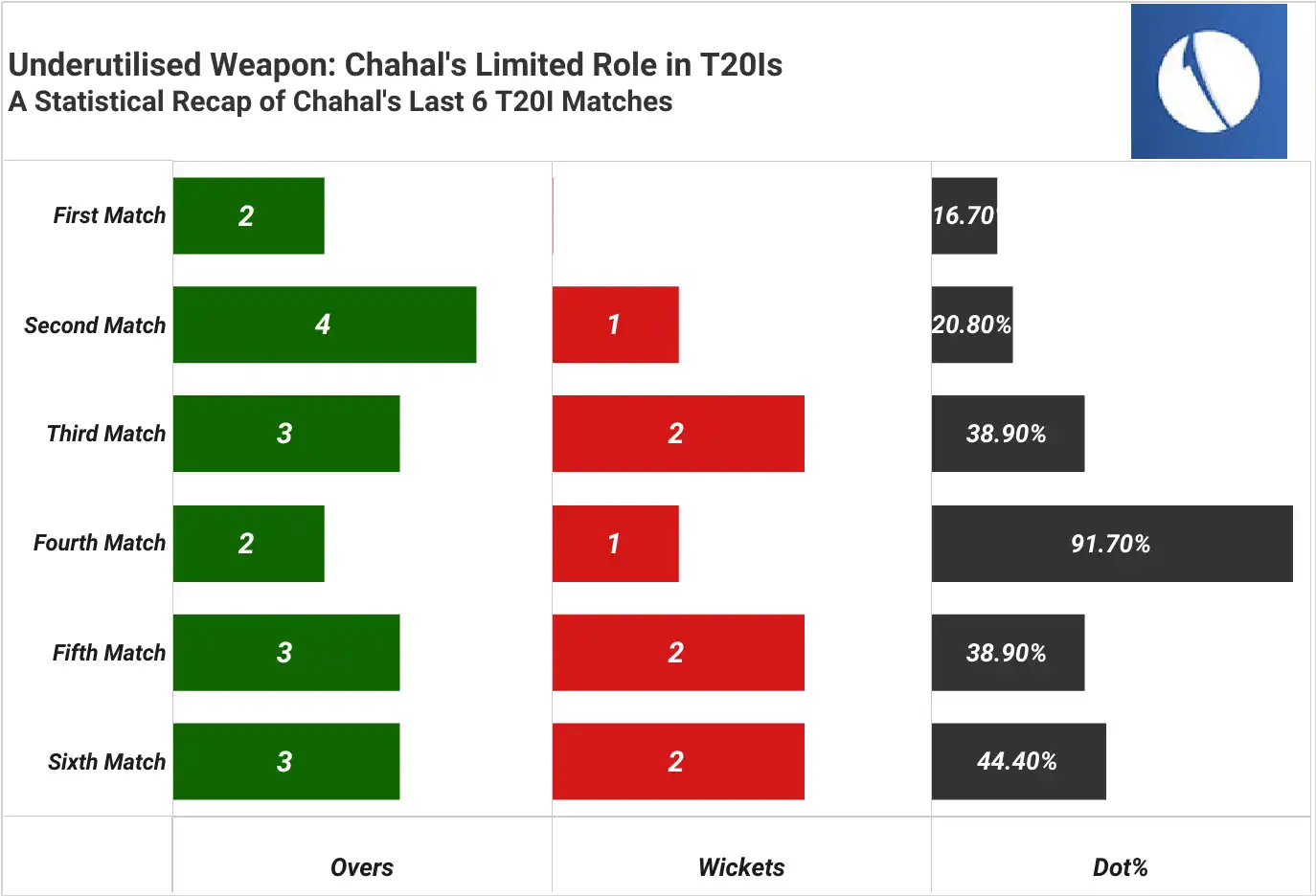 Yuzvendra Chahal was the best bowler for Indian in the first two T20Is against West Indies (Source: AP Photos)
Yuzvendra Chahal was the best bowler for Indian in the first two T20Is against West Indies (Source: AP Photos)
Yuzvendra Chahal's prowess as a leg-spin bowler in T20 cricket is noteworthy. His ability to deceive batters with his variations and control has made him a vital asset to the team. However, his recent underutilization has indeed raised questions. In the ongoing T20I series against West Indies, Chahal's performances have mirrored his capabilities. Despite displaying impactful spells and scalping crucial wickets, there have been instances where he was not allowed to complete his full quota of overs.
The most striking example occurred during the second T20I match. In the 16th over, Chahal brilliantly accounted for the dismissals of Shimron Hetmyer and Jason Holder, effectively shifting the momentum in India's favour.
However, what followed was a decision that perplexed many observers. Captain Hardik Pandya chose not to continue with Chahal for the subsequent over, which raised eyebrows given the spinner's successful intervention just moments before. In the first T20I as well, Despite bowling only three overs, he significantly impacted the match by taking two crucial wickets while conceding 24 runs.
A Statistical Recap of Chahal's Last 6 T20I Matches
 Overs, Wickets & Dots % of last 6 T20I Games
Overs, Wickets & Dots % of last 6 T20I Games
It's notable that Yuzvendra Chahal has been frequently under bowled in recent matches, preventing him from completing his full quota of 4 overs. This trend raises questions about the team's strategy and management decisions regarding his bowling responsibilities. If we look at his last six matches, only in 1 match he completed his spell of 4 overs.
In the ongoing series against West Indies, he has bowled six overs, conceding just 43 runs while picking up four wickets. This translates to an economy rate of approximately seven runs per over. His ability to maintain such a low economy rate in T20 cricket is exceptional.
Looking at his overall performances in his last 6 T20I matches, Chahal has bowled 17 overs. During this period, he has conceded a total of 133 runs and has picked up eight wickets, averaging an impressive 16.6 runs per wicket. His economy rate over these matches is 7.82, showcasing his control over opposition batters.
In terms of dot balls, Chahal has managed to bowl a substantial percentage of them, restricting the scoring opportunities for the opposition. Over the last six matches, he has bowled 39.2 per cent dot balls, underscoring his ability to create pressure on the batters and maintain a tight line and length. These statistics reflect Chahal's effectiveness in the middle overs, where he restrains the scoring and takes crucial wickets.
Conclusion
Given his recent performances, it's evident that Chahal can play a pivotal role in India's T20 bowling attack and should ideally be utilised to complete his full quota of overs to maximise his impact on the game. Chahal's ability to consistently pick wickets and control the run flow has been proven over time. However, his effectiveness could be even more pronounced if he's allowed to bowl his total allocation of overs. T20 cricket often demands bowlers who can create breakthroughs and put pressure on the opposition.
Chahal's skill set aligns with these requirements, making it crucial for him to be utilised optimally. The team management must assess the situation and consider Chahal's track record when determining his bowling spell. In T20 cricket, making the most of all available resources, especially proven match-winners like Chahal, can significantly impact the team's fortunes.






